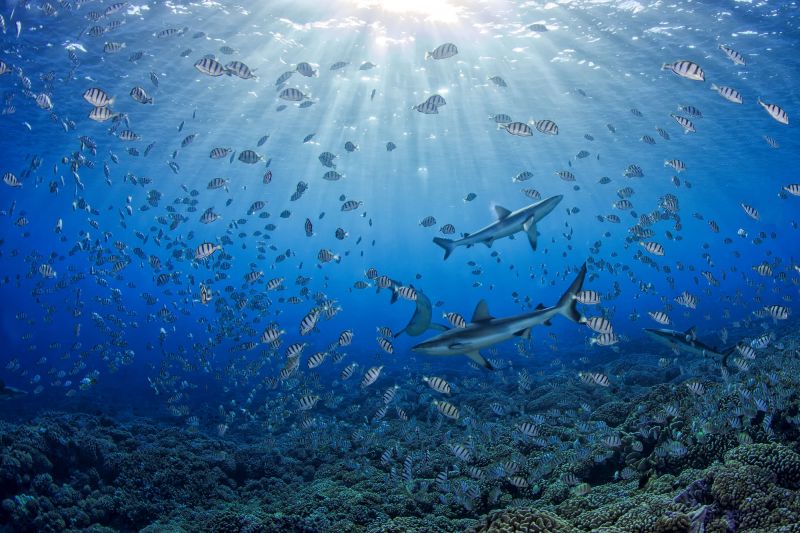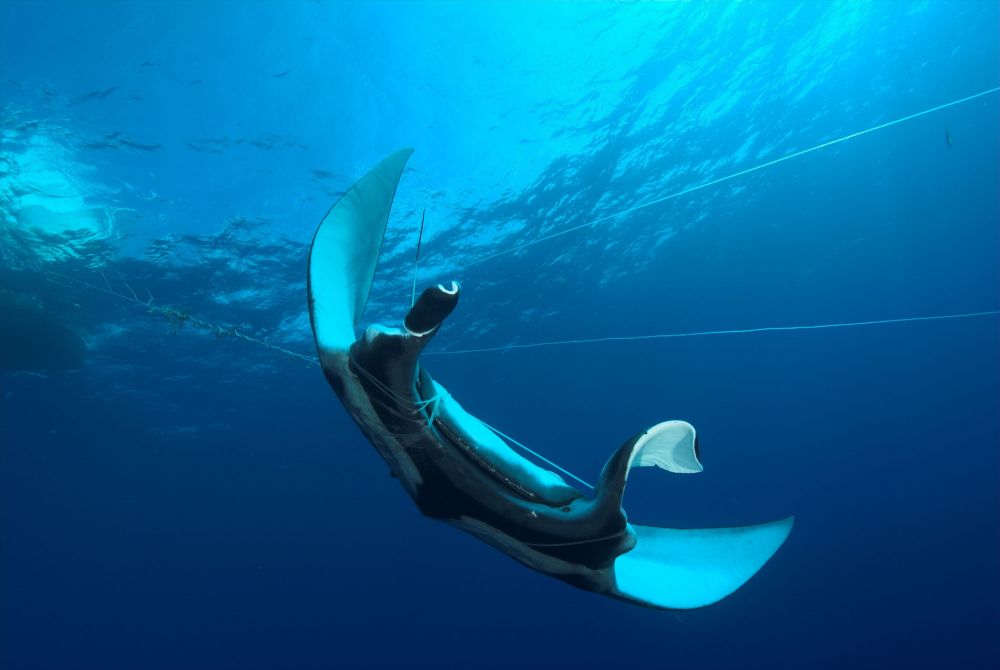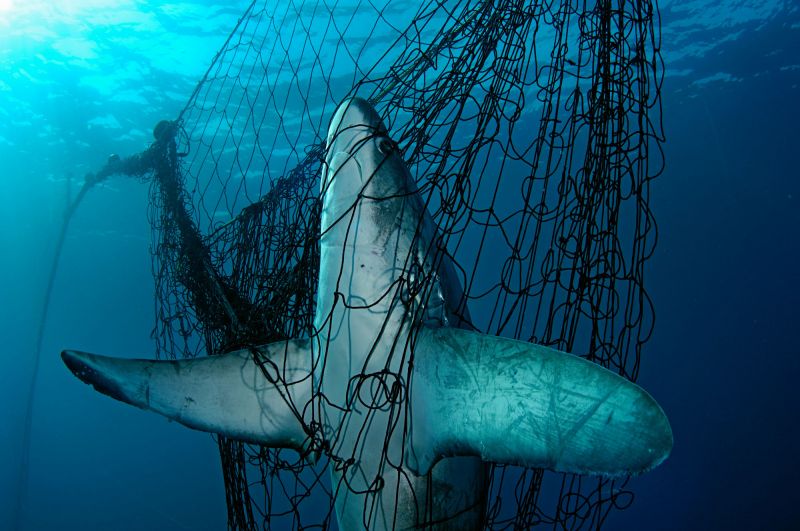Over 1,200 species of sharks and rays inhabit our oceans, from the warm shallows of coral reef lagoons, to the cold depths of the high seas. Older than the dinosaurs, they have existed on our blue planet for more than 400 million years. With such a long evolutionary history, it is no wonder their presence is critical to the functioning of the marine ecosystems that underpin life on Earth as we know it.
Sharks and rays are indispensable to ocean health and, in turn, to the well-being of millions of people across the globe. These animals are valuable much more when alive than dead, from helping us buffer climate change to supporting the productivity of marine food webs.

Of the many hundreds of shark and ray species, the top predators help ensure balance in the delicate blue web of life.

Tiger sharks prevent the overgrazing of seagrass meadows by marine creatures like turtles and dugongs, which in turn helps the seagrass grow denser.

Seagrass meadows - which can grow denser thanks to tiger sharks - are not only critical fish nurseries, but also function as carbon sinks, capturing carbon up to 35 times faster than tropical rainforests.

But this isn’t just about the apex predators. Large bottom-dwelling rays such as stingrays, for example, act as “habitat engineers.” As they excavate sand in search of food, they are creating micro-habitats for various tiny invertebrates at the same time.

Sharks and rays even support the productivity of marine food webs. Larger, deep-diving species bring nutrients to the surface, which are needed to nourish phytoplankton. You could say that the productivity of our oceans depends on phytoplankton, which forms the basis of the food chain.
In spite of the significance of sharks and rays for people and nature, their very existence is in jeopardy.
37% of all 1,200+ species are now at risk of extinction, with over 200 species Critically Endangered (CR) or Endangered (EN), according to the IUCN Red List of Threatened Species.
Global populations of some species have declined by over 95% and species have already started disappearing.
Numerous local and regional extinctions have been documented, while three species have possibly gone extinct globally.



With up to 100 million animals killed every year, overfishing is by far the largest threat. It’s fuelled by demand for shark and ray products for consumption and trade, and careless bycatch.
With a lot of great conservation work already happening around the world, why aren’t things improving for sharks and rays fast enough? The rate at which humans are emptying the oceans dwarfs existing efforts to conserve them - we simply can’t keep up with the sheer scale of overfishing.
Low reproductive rates and maturing late make sharks and rays particularly vulnerable to overfishing.
Continuing high demand for shark and ray meat and fins.
Sharks and rays are typically not a priority for fisheries managers who focus on more commercially valuable species such as tuna.
No catch limits and insufficient data on catches or bycatch.
The most common fishing methods and gear were not designed to exclude sharks and rays, and some catch anything in their path, including protected species.
Lack of sufficient resources to protect sharks, rays, and our oceans.
The sheer vastness of our oceans makes monitoring the fishing activities and enforcement extremely difficult.
Anything that happens below the water surface is usually out of sight and out of mind for most, so it doesn’t trigger public pressure for reform.
This is a solvable crisis. Past successful recoveries of sharks and rays show that these animals can be brought back from the brink. We need to apply, adapt, and scale lessons from these successes in places where some of the rarest species can still be found in healthy numbers. The Shark and Ray Recovery Initiative (SARRI) is our latest response to save sharks and rays from extinction.

With up to 100 million animals killed every year, overfishing is by far the largest threat. It’s fuelled by demand for shark and ray products for consumption and trade, and careless bycatch.
With a lot of great conservation work already happening around the world, why aren’t things improving for sharks and rays fast enough? The rate at which humans are emptying the oceans dwarfs existing efforts to conserve them - we simply can’t keep up with the sheer scale of overfishing.

Low reproductive rates and maturing late make sharks and rays particularly vulnerable to overfishing.
Continuing high demand for shark and ray meat and fins.
Sharks and rays are typically not a priority for fisheries managers who focus on more commercially valuable species such as tuna.
No catch limits and insufficient data on catches or bycatch.
The most common fishing methods and gear were not designed to exclude sharks and rays, and some catch anything in their path, including protected species.
Lack of sufficient resources to protect sharks, rays, and our oceans.
The sheer vastness of our oceans makes monitoring the fishing activities and enforcement extremely difficult.
Anything that happens below the water surface is usually out of sight and out of mind for most, so it doesn’t trigger public pressure for reform.

This is a solvable crisis. Past successful recoveries of sharks and rays show that these animals can be brought back from the brink. We need to apply, adapt, and scale lessons from these successes in places where some of the rarest species can still be found in healthy numbers. The Shark and Ray Recovery Initiative (SARRI) is our latest response to save sharks and rays from extinction.
The Shark and Ray Recovery Initiative (SARRI) is our latest response to save sharks and rays from extinction. Past successful recoveries show that these animals can be brought back from the brink. Follow us on this recovery journey.
Already registered?
Not registered already?
Thank you for registering but an account already exists for the email address you provided.
Thank you! A magic login link has been sent to the email address provided. Please use it within 15 minutes.
You are currently logged in
Sorry but no account was found for that email address.
© 2024 SARRI
All rights reserved.
Website by Roojai